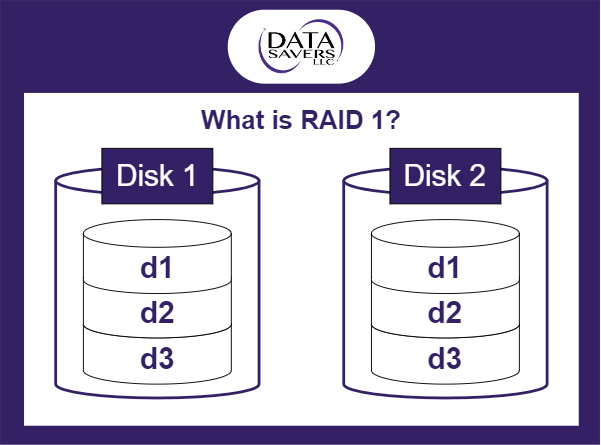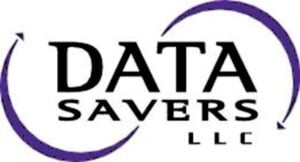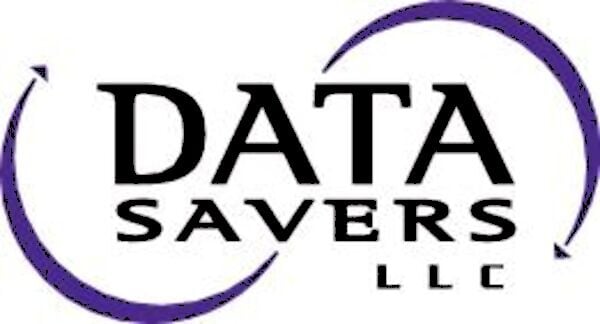What is RAID 1?
RAID 1 is a popular data storage solution for individuals and organizations who have substantial storage requirements, a detailed understanding of RAID storage, and a desire to protect their data with redundancy that’s impossible with a single hard drive. RAID 1 systems use a concept known as mirroring to protect your data in the event of hard drive failure. While RAID 1 systems are certainly a more responsible choice than RAID 0, there’s a reason Data Savers LLC offers RAID 1 data recovery…
Data loss is never a laughing matter, and data loss from a RAID 1 storage appliance is no exception. The engineers at the Data Savers LLC data recovery laboratory are professionals with RAID 1 data recovery. Not only does our team have almost two decades of experience, but we also have a success rate that is among the highest in the industry.

What is Mirroring? – RAID 1 Data Recovery
Mirroring is not a complex concept, but it is still a powerful technique for safeguarding data. When you look in a mirror, you see an exact (mirrored) copy of your face looking back at you. If you were to put on a hat and look in the mirror again, you would see that the mirrored copy of your face was also wearing a hat! The same is true of RAID 1 storage systems. Data saved to the system is saved to all drives at the same time. You can move on to the next section if you’re waiting for the part of this “definition” that actually warrants a detailed explanation. This is not rocket science, if you want a RAID concept that will strain your brain, look up RAID 6, and try to wrap your head around double distributed parity.
RAID 1 Data Recovery with Data Savers?
Who should you trust with your precious files when you experience a data loss as the result of RAID 1 failure? Why Data Savers LLC of course! The Data Savers LLC team is comprised of experienced professionals who have studied electrical engineering and computer science. Believe it or not, but that isn’t the only reason you should trust Data Savers LLC with your RAID 1 data recovery. Data Savers LLC has been restoring data from failed storage devices for almost two decades. With a complex service like RAID 1 data recovery, having the steady hand that only comes through years of hands-on experience can be the deciding factor between failure and a successful RAID 1 data recovery! Request an estimate with the form below this paragraph!
Request an Estimate for RAID Data Recovery!

Why Would I need Data Recovery RAID 1?
Like most problems outside the realm of things that happen to the average person, it’s easy to assume hard drive failure won’t happen to you. A lot of people who make this assumption never come to regret it, as they either replace their computer (and hard drive) before the drive experiences an issue, or they experience an issue with the drive, but they don’t really care about losing the data stored on it. A less fortunate crowd will be profoundly unhappy when they experience hard drive failure and learn that data loss is a stressful experience first-hand.
Like almost anything in the world of technology, or the natural world for that matter, hard drives die. Every hard drive is apt to die someday (this is referring to hard drives that are actively in use. We aren’t talking about hard drives that are still in their original packaging, tucked away in a dry temperate corner of a warehouse). Now, consider a RAID system comprised of hard drives. If you aren’t familiar with statistics, the probability of experiencing drive failure in a RAID system increases with each drive added to the array.
The majority of RAID users who lose a hard drive in their RAID 1 storage system are protected from data loss, assuming the following three propositions are true.
1. Other hard drive(s) in the RAID 1 system did not fail.
2. Data on the other drives in the array is intact and complete.
3. The administrator responsible for maintaining the system realizes a drive failed and takes appropriate action to resolve the situation.
The last assumption is where most organizations fall short. The Data Savers LLC team has seen a number of RAID systems come into our lab where the storage system proved resilient to the first drive failure, but the (employee who was) system admin (before being fired) was busy playing Clash of Clans on his phone and didn’t notice there was a drive failure until the entire server went down a few weeks later. The likelihood of this scenario can be mitigated by using the email alert functionality offered by many RAID controllers.
The Price of Hard Drives and RAID 1 Data Recovery
As you are likely aware, the storage capacity of a hard drive is a significant factor in determining the price of the drive. For example, this 16 gigabyte Seagate hard drive costs $34.99. While this drive may have been produced while George W. Bush was the president of the United States, it still serves for the purpose of this example. In the modern world, sixteen gigabytes is a painfully inadequate amount of storage today, that said, the drive only costs $35. On the other hand, we have a top-of-the-line hard drive produced by the same company; a 16 terabyte Seagate hard drive costs $289.99. This example could be picked apart from a logical perspective if you so choose, but the point we are trying to illustrate is that purchasing hard drives with significant storage capacity is not cheap. While a RAID 0 user would be able to configure a dozen inexpensive drives and utilize the resulting virtual disk as if it were a physical disk, the same is not true of a RAID 1 owner.
